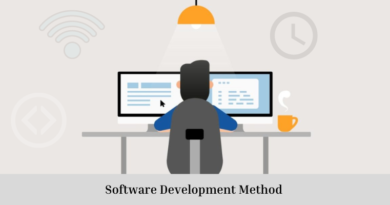What Are Test Data and Training Data
Many people view test and training data as the same, but not differentiating between the two can create confusion and even be counterproductive. While they have some similarities, they are very different, and each plays a unique role in the development of systems.
Here are the key differences between the two and how you can tell them apart.
What is Training Data?
In machine learning, algorithms help a machine learn. The algorithms find patterns, provide options, make decisions, and create the environment for learning needed for a machine to perform commands accurately. The algorithms “learn” via datasets run in a learning model.
The learning model works like this:
- The model is fed data.
- The model migrates the data into numbers representing data features.
- The data features get tested to validate that the outcome is desired and accurate.
Essentially, the model assesses the data and, using an algorithm, provides a set output of corresponding numbers. Those numbers should match up with the lesson the algorithm and model pick up from the data.
The learning model identifies and learns new patterns depending on the data loaded into the machine. The model then takes those patterns and transformed data and teaches the machine for future use.
Predictive Learning
Training data train an algorithm to recognize a pattern, which allows the algorithm to predict a result.
Suppose the learning model aims to determine if there is a feature in an image. The training data will include images with the presence or absence of the feature in question contained in the photo. Ideally, the algorithm learns to differentiate between a picture with the feature and one that does not have it.
Whether the algorithm learned the lesson adequately is where the testing phase comes in.
What Qualifies as Training Data?
Training data is any data containing the information you want to impart to the machine. So, in the image example, your dataset would have to have data representing images with the feature you want to identify and images without that feature. In addition, the dataset will have other data that help the learning model pick up on nuances of the photo images and the feature.
That data is available in two ways: You build the database with the criteria you want or purchase the database with the required data. With both, you need labeled data and a sizable portion of data that is unlabeled.
The benefit of assembling your data is knowing the data in your training dataset. The advantage of making a data purchase is that it saves time because you do not have to make your dataset.
Larger Equals More Learning
Training data are usually in sets that are larger than testing data sets. The datasets tend to be larger because more data offers more opportunities to identify and learn data patterns. Training data gets fed into a learning algorithm. As the algorithm processes the data, it picks up on patterns, makes decisions, and “remembers” what that particular data set yielded.
Over time, this process helps machines learn how to solve problems based on prior observations and identified patterns. Experiential learning is very similar to how human beings learn. Whether we realize it or not, all of our knowledge is from processing the results of experiential data, which is the same as training data.
Human beings do not need as much data to learn as machines because humans tend to be reasonably quick studies. Humans will forget things, though, which is something a machine will not do.
The human comparison helps understand a training set of data. As a machine processes data, it learns new ways to do things. The acquired knowledge improves its performance over the development cycle. It also adds value to the machine because the more it knows, the more it can do.
What Is Testing Data?
Testing data is validation data because hit helps a machine confirm what it learned via the training data. This dataset is run through the “educated” machine to verify the machine acquired what it needed to know and that what it learned was accurate.
Test data must meet a few stipulations:
The Data Must Be Realistic
It must represent an actual dataset the machine would work with once it is in its intended environment. The data cannot be part of scenarios the machine will never encounter once brought online. For example, suppose you were training a machine to process money and assign it to specific accounts.
If you only used data that the machine would never encounter, you would have no way of knowing if it could process data it would generally experience beyond confirming that the machine can process some data.
So if you were teaching the machine to process $20, $50, and $100 bills, you should not test it with $1, $5, and $1,000 bill data. Without using the correct bill data, you could not tell if the machine could accurately process $20, $50, and $100 bills, just that it could process dollar data.
To validate what the machine can do, you would have to use test data that mainly contained $20, $50, and $100 denomination data. You could use the other denominations to verify that the machine did not recognize what it was not supposed to recognize. Still, a validation of the learned behavior would have to have data the machine would typically see.
The Dataset Must Be Large Enough
Small subsets of data will restrict how much can be validated just by the law of averages. If your training data has thousands of possible learning points, then your testing data must be similar, or it will not test as many learning points as you want.The best way of envisioning this is to think of testing scenarios for a machine that could take orders from a fast food restaurant’s menu.
If the menu has 100 items and you used training data with all 100 items, you must have at least enough data to reflect those 100 items during testing. If you choose data covering only 25 items, you left 75 untested. That concept applies to any testing environment involving a machine learning model.
Because of that, your test data subset must be large enough to cover the scenarios you trained the machine to learn, or you will not have validated the machine learned all it wanted. Further, if critical data gets left out of the testing data, you will not be able to validate that your machine can accurately interpret that key data.
If you think of that in terms of a machine doing something with major and minor tasks, you can see how important it is that your dataset contains at least all the significant functions. At the very least, you must prioritize the data that needs to be in a test and ensure the top priorities get covered in the data you use for a test.
Data Test Sets Must Be New
Since the machine you are testing has already “seen” specific training data, the data you use for the validation set must be “new” data. It must be new because fresh data will test the limits of what the machine has actually learned. If the machine cannot recognize the “lesson” of the training data on new data, the test cannot validate the knowledge of the machine.
More training data is needed to rerun the training scenarios when this happens. This process runs until the machine recognizes all the required training scenarios when given new data.
So, Are the Two the Same?
As mentioned, there are similarities between training and testing data used for machine learning. Both usually are subsets of data from a larger dataset, and both data sets must be formatted the same, or test data sets may not validate properly.
Additionally, each dataset is working towards the same goal: Helping a machine learn what it needs to learn to function properly. That is a critical one-two punch in the process of creating smarter machines. In this respect, training and testing data need each other to serve their intended purpose.
Why Does Any of This Matter?
Understanding the differences between training and testing data is vital because each has a distinct role in educating a machine. If misused, you hamper the machine’s learning.
If training data gets used to validate a machine, the results will show a machine that had not learned as much as it needed. If you used testing data in training, you would limit the scope of learning to the narrowly defined data in the test selection.
Final Thoughts
People often confuse training and testing data, and the results when they are confused can be machines or machine processes that have not learned all that is possible for a machine to learn. By understanding the difference between the two, you can ensure that your machine learning is as complete as possible.




